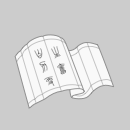
中国蕨类植物图谱
¥ 183.68 6.6折 ¥ 280 全新
库存5件
四川成都
认证卖家担保交易快速发货售后保障
作者秦仁昌 著
出版社北京大学出版社
ISBN9787301194751
出版时间2011-10
装帧精装
开本16开
定价280元
货号1200153603
上书时间2024-11-21
- 在售商品 暂无
- 平均发货时间 7小时
- 好评率 暂无
- 最新上架
商品详情
- 品相描述:全新
- 商品描述
-
作者简介
秦仁昌,字子农,江苏武进人。生于1898年,1914年入江苏省第一甲种农业学校,1919年考入金陵大学,1925年毕业。1923年任东南大学助教,1928年升为讲师,1929年任“中央研究院"自然历史博物院植物部技师,1930年春获中华教育文化基金会资助,前往丹麦等欧洲诸国访问研究。1932年回国,任静生生物调查所技师,兼植物标本室主任。1934年创建庐山森林植物园并任主任,1938年辗转至云南丽江,设立植物园丽江工作站。1945年任云南大学林学系教授,后任生物系教授兼系主任。1955年当选为学部委员,1956年任中国科学院植物研究所研究员兼植物分类与植物学地理学研究室主任。1986年在北京去世,享年八十有八。秦仁昌一生致力于蕨类植物分类研究,以创建秦仁昌系统而享誉国际,该项成果于1993年荣获中国国家自然科学一等奖。
目录
第一卷 FASCICLE l
1.Helminthostachys zeylanica,锡兰七指蕨/2
2.Archangiopteris henryi,亨利马蹄蕨/4
3.Trichomanes tereticaulum,圆柄石衣蕨/6
4.Woodsia cinnamomea,赤色岩蕨/8
5.Cystopteris moupinensis,滇冷蕨/10
6.Dryopteris enneaphylla,宜昌金星蕨/12
7.Aspidium Iongicrure,燕尾三叉蕨/14
8.Aspidium ebenium,黑柄三叉蕨/16
9.Polystichum duthiei,杜氏耳叶蕨/18
10. Polystichum acanthophyllum,刺耳叶蕨/20
11. Polystichum deltodon,对生耳叶蕨/22
12. Polystichum hecatopterum,锯齿耳叶蕨/24
13. Polystichum chunii,陈氏耳叶蕨/26
14. Cyrtomium hemionitis,单叶贯众/28
15. Cyrtomium nephrolepioides,低头贯众/30
16. Cyrtomium lonchitoides.拟贯众/32
17. Cyrtomium fraxinellum,槐叶贯众/34
18. Microlepia chrysocarpa,黄胞鳞蕨/36
19. Lindsaya chienii,钱氏假铁线蕨/38
20. Lindsaya chinensis,华假铁线蕨/40
21. Athyrium anisopterum,宿蹄盖蕨/42
22. Asplenium finlaysonianum,网脉单盖蕨/44
23. Diplazium pullingeri,波氏双盖蕨/46
24. Diplazium pellucidum,膜叶双盖蕨/48
25. Diplazium macrophyllum,大叶双盖蕨/50
26. Phyllitis delavayi,荷叶对开盖蕨/52
27. Phyllitis cardiophylla,琼崖对开盖蕨/54
28. Blechnum eburneum,象牙乌毛蕨/56
29. Gymnopteris vestita,金毛裸蕨/58
30. Plagiogyria henryi,亨氏瘤足蕨/60
31. (1-5) Adiantum greenii,格氏铁线蕨6-9) Adiantum nanum,矮铁线蕨/62
32. Pteris deltodon.岩凤尾蕨/64
33. Pteris hui,胡氏凤尾蕨/66
34. Pteris dimorpha,二形凤尾蕨/68
35. Pteris actiniopteroides,猪鬣风尾蕨/70
36. Pteris paupercula,黄毛凤尾蕨/72
37. Pteris excelsa,溪凤尾蕨/74
38. Vittaria pauciareolata,阔叶书带蕨/76
39. Vittaria nana,矮叶书带蕨/78
40. Antrophyum petiolatum,长柄车前蕨/80
41. Polypodium dareaeformioides,乌柄水龙骨/82
42. Polypodium mengtzeense,蒙自水龙骨/84
43. Polypodium oblongiosorum,珠带水龙骨/86
44. Polypodium triglossum,三叶水龙骨/88
45. Polypodium ellipticum 椭圆水龙骨/90
46. Polypodium leveillei,莱氏水龙骨/92
47. Loxogramme chinensis,华剑蕨/94
48. Neocheiropteris palmatopedata,掌状扇蕨/96
49. Elaphoglossum austro-sinicum,华南舌蕨/98
50. Cheiropleuria bicuspis,二尖燕尾蕨/100
第二卷 FASCICLE 2
51. Oleandra wallichii,高山蔡蕨/104
52. Woodwardia harlandii,哈氏狗脊/106
53. Asplenium adnatum,合生铁角蕨/108
54. Taenitis blechnoides,竹叶蕨/110
55. Pteris insignis,全缘凤尾蕨/112
56. Adiantum faberi,峨眉铁线蕨/114
57. Lepisorus lewisii,庐山瓦苇/116
58. Lepisorus eilophyllus,高山瓦苇/118
59, Lepisorus sublinearis,滇瓦苇/120
60. Lepisorus pseudonudus,长瓦苇/122
61. Lepisorus loriformis.带瓦苇/124
62. Lepisorus macrosphaerus,大瓦苇/126
63. Lepisorus macrosphaerus
var. asterolepis,黄瓦苇/128
64. Lepisorus kuchenensis,瑶山瓦苇/130
65. Lepisorus bicolor,两色瓦苇/132
66. Lepisorus obscure-venulosus,粤瓦苇/134
67. Lepisorus clathratus,网眼瓦苇/136
68. Lepisorus sordidus,黑鳞瓦苇/138
69. Lepisorus suboligolepidus,拟鳞瓦苇/140
70. Lepisorus oligolepidus,鳞瓦苇/142
71. Lepisorus subconfluens,连珠瓦苇/144
72. Lepisorus heterolepis,芨瓦苇/146
73. Lepisorus angustus,狭叶瓦苇/148
74. Lepisorus ussuriensis,乌苏里瓦苇/150
75. Lepisorus contortus,扭瓦苇/152
76. Lepisorus thunbergianus,瓦苇/154
77. Lemmaphyllum subrostratum.骨牌蕨/156
78. Lemmaphyllum adnascens,川石莲/158
79. Lemmaphyllum drymoglossoides,抱石莲/160
80. Lemmaphyllum microphyllum,抱树莲/162
81. Cyclophorus calvatus,光石苇/164
82. Elaphoglossum mcclurei,琼崖舌蕨/166
83. Microsorium fortuni,福氏星蕨/168
84. Microsorium hymenodes,滇星蕨/170
85. Microsorium buergerianum,波氏星蕨/172
86. Microsorium punctatum,星蕨/174
87. Microsorium zippelii,戚氏星蕨/176
……
第三卷 FASCICLE 3
第四卷 FASCICLE 4
第五卷 FASCICLE 5
拉丁名索引Index to Latin Names/512
中文名索引Index to Chinese Names/515
分类和名称变化对照表Taxonomic and
Nomenclatural Changes/517
内容摘要
蕨类是高等植物中比较原始的一个类群,曾经繁盛于古生代后期和石炭纪。蕨类以其很高的观赏价值和进化地位为很多植物爱好者和自然爱好者所关注。
《中国蕨类植物图谱》(5卷本)是中国蕨类植物之父秦仁昌的代表作之一。1930年由国立中央研究院博物馆静生生物调查所出版。这部手绘图谱是研究中国蕨类植物的重要文献资料。在这之后的众多蕨类植物研究论文大量引用这部图谱。因此,要了解中国蕨类植物的研究历史与现状就不能不提到这部图谱。
这部手绘图谱,中英文对照,具有重要的学术价值,并且在国际植物学界都有重要的地位。此外,本书绘图精美,大开本绘制,极具收藏价值。
目前国内很多年没有再版此书,国内许多大型图书馆都很难找到一套完整的图谱。
中国科学院植物研究所蕨类植物研究权威张宪春研究员将对现在分类系统中有所变更的内容,一一对照列出,放在书后作为附录。
这部图书的再版比较适合研究教学、馆配、收藏及版权输出。
主编推荐
精彩内容
hizome wide-creeping, 1. 5 mm thick, densely scaly; scales ruf
-brown, subulate, firm; frond distant, dimorphous,steriLe one narrowly linear elongate, stipe to 10 cm long, slender, pale straminous, lamina 10-15 cm long, 2-3 cm broad,slightly broader towards base, bipinnate; pinna l0-15-jugate, thombic, petiolate, basal pair to 3. 5 cm long, upper ones 2 cmlong, subunequally cuneate at base, pin.nutes 2-3-jugate, subrhombic, base slightly decurrent, apex obtuse; segments 2-3-jugate, small, 2-3-dentate; texture rather rigid, color green; fertile frond much longer and broader, stipe 15-20 cm long,straminous, lamina as long as stipe, broadly lanceolate, long-attenuate towards above middle, base to 6 cm broad,tripinnate; pinnae l0-15-jugate, long-petiolate, base unequally cuneate, basal pair to 10 cm long, 3 cm broad, long-acuminate towards simple pinnate apex; segments few, sili-queform, 10 mm long, 1. 5 mm broad, acuminate; sori linear, 5-7 mm long, indusium conforms, broad, gray, entire, reaching costule from both sides.
Sichuan: Moupin, David (type).
This species, confined to the highland of western Sichuan, differs from O. japonicum Kze. in much narrower and lessdivided frond and particularly the sterile one, which is of linear-elongate outline to 3 cm broad from somewhat broader base,and the fertile frond with extremely l
ng-attenuate upper part.
Plate 162. Fig. 1. Habit sketch (natural size). 2. Portion of sterile frond, showing venation (X 8), 3. Portion offertile frond (x 8). 4. Ultimate segment of fertile frond, showing position of sori and indusia (X 16). 5. Scale fromthizome ( X 27).
— 没有更多了 —












以下为对购买帮助不大的评价